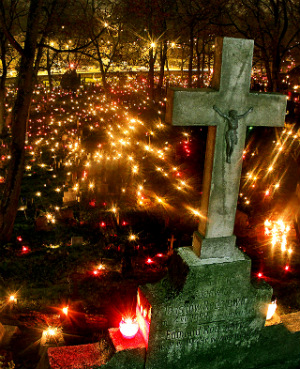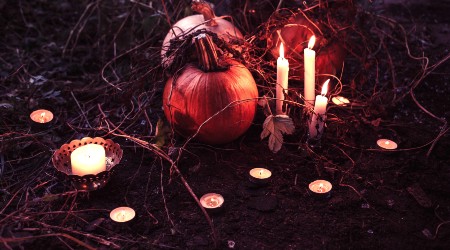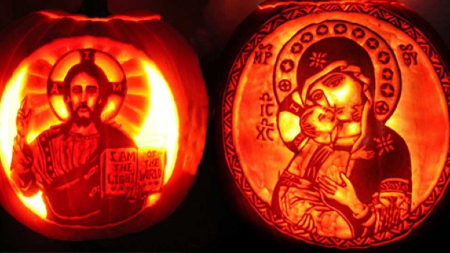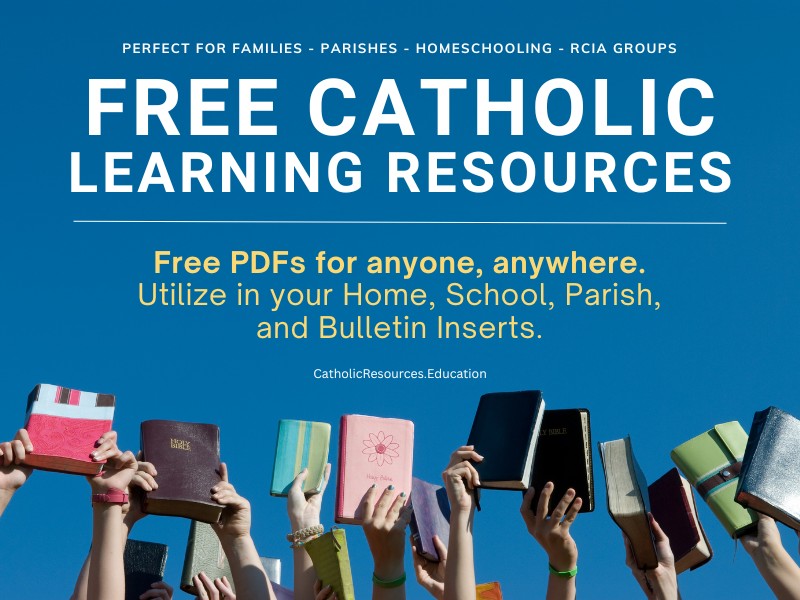We ask you, humbly: don't scroll away.
Hi readers, it seems you use Catholic Online a lot; that's great! It's a little awkward to ask, but we need your help. If you have already donated, we sincerely thank you. We're not salespeople, but we depend on donations averaging $14.76 and fewer than 1% of readers give. If you donate just $5.00, the price of your coffee, Catholic Online School could keep thriving. Thank you.Help Now >
Francia
FREE Catholic Classes
(FRANCESCO RAIBOLINI)
A famous Bolognese goldsmith, engraver, and artist, b. about 1450; d. in 1517. His family was one of the best in Bologna, and owned land at Zola Predosa. His father was a wood-carver, but Francesco entered the guild of goldsmiths (1482), and was elected its head in the following year. His master was one Duc, surnamed Francia, doubtless because of his native land, and Francesco adopted this surname, either through gratitude, or more probably as a valuable trade-mark. Like Pisanello, Verrocchio, Pollaiuolo, and Ghirlandajo, he is an example of what Italian art owes to close association with the minor arts. A gradation of the fine arts, the idea of greater or lesser dignity and rank, did not then exist and was to spring up only later, in the school of Michelangelo. This fact imparts to all the æsthetic manifestations of the classic period that unity and perfection of detail and life which imagination and taste impress on all things. The relations between the goldsmith's art and painting were then particularly close. In this way painting was enabled to rise above the vulgar demands of a pious imagerie of the Giottesque type, and the dry and pedantic learning of Uccello and Andrea del Castagno. Art, ornament, and beauty, which threatened to disappear, were thus restored to painting. This is why the "industrial" side of Francia's art, exemplified in his admirable medals, nielli , and enamels, his work as a jeweller, an armourer, and a type-caster, cannot be too strongly insisted on. He is known to have designed the italic type for the edition of Virgil published by Aldus Manutius (Venice, 1501). We know also that the invention of engraving is partly due to the art of niello in which Francia was a master. A few prints are ascribed to Francia; in the art of engraving he was the first master of Marcantonio Raimondi.
Circumstances, however, impelled Francia to become a painter. Very probably he received his first lessons from Francesco Cossa (d. at Bologna, 1485), but it was from Lorenzo Costa that he received his principal instruction. This artist, slightly younger than Francia, had recently won renown at Ferrara and returned in 1483 to Bologna, where he set up his studio in the house occupied by the goldsmith. More than one work (church of the Misericordia, Bentivoglio palace) resulted from their friendly collaboration. Certain peculiarities of Francia, his familiar scenic arrangements, the beautiful architecture, the carved thrones of his Madonnas, the little angelic musicians seated on steps, are touches of Ferrarese taste which proclaim the influence of Costa. In landscape Francia felt later the influence of Perugino (1446-1524), who, in 1497, was painting his "Virgo Gloriosa" at San Giovanni in Monte. These influences, however, should be acknowledged with all the reserve imposed in the case of an already mature man, who had long been an artist of repute when he began to paint. The earliest extant works of Francia, e.g. the "Calvary" of the Archiginnasio of Bologna, the "Madonna" of Berlin, above all the remarkable "St. Stephen" of the Casino Borghese, are remarkable for a certain character of "dilettantism" (Burckhardt), for something so intentionally unique and original that one does not know with what to connect them in all the history of painting. We feel ourselves in the presence of a master who grasps with firmness his own ideas and is extremely personal in his tendencies, one who takes up a new craft only because it enables him to apply highly individual theories or express his intimate tastes. The early attempts were followed by a series of great works dated as follows: the Felicini reredos (Bologna, 1494), that of the Bentivoglio (San Giacomo Maggiore, 1499), those of the Scappi and the Manzuoli, the great "Annunciation" (Pinacoteca of Bologna, 1500), and various others now in the museums of Berlin and St. Petersburg. It is always the same subject so beloved throughout the fifteenth century, the Virgin surrounded by various saints ; even when styled an "Annunciation", the treatment remains the same. The composition is necessarily uniform, in deference to the law of symmetry. There is naturally no action, the painter's object being to produce with these motionless figures an effect of harmony and recollection. It is a calm and tranquil beauty that he seeks to reproduce. But within these limits no one, not even Giovanni Bellini, though his "Madonna of San Zaccaria " dates from 1505, achieved so much. The orderly disposition of his figures and his well-balanced lines, heightened often by an architectural background or by landscapes, produces an impression of profound peace. So much happiness could have but one legitimate expression, i.e. music. In other words the angels playing on the harp or the lute, whom Francia loved to introduce, interpret naturally the emotions awakened by the harmony of form. Let it be added, and in this he differs from Perugino, that with him lyricism never becomes mere formula. The inspiration of Francia seems inexhaustible; hence his ability to vary indefinitely, and always with success, the same theme. Francia was always too conscientious to reproduce in a commonplace way works which were the outcome, on his part, of a deep emotional life. In this artist the conventional never replaces true sentiment, as in Perugino during the last twenty-five years of his life.
The types of Francia, though extremely general in significance, are none the less markedly individual ; his Sebastian has not the same features, the same piety, the same ecstasy as Bernard, nor is his figure of Augustine the same as that of Francis. In execution he displays admirable care in all details and is never negligent. The figures are irreproachably constructed, while the elegant ornamentation, the sculptures, embroideries, tiaras, and dalmatics betray the sharp and critical eye of the goldsmith and engraver. Of this we are reminded still more forcibly by his fondness for, and careful selection of, the best materials for his palette, and his taste for compact, thick, enamelled painting, of itself a pleasure to the eye. Each picture of Francia has its own sonorous harmony ; throughout his work we seem to hear, as it were, an orchestration of colour. We have here the principles of an entirely new art, altogether different from the ultra-intellectual preoccupations of the Florentine School. Horace had said that poetry was a kind of painting, ut pictura poesis ; one might imagine that in turn Francia wished to prove that painting was a kind of music. It was the idea likely to arise in an ancient musical city immemorially famous for its singers and its lute-players. Only in his later pictures, however, e.g. the "Baptism of Christ" (Dresden, 1509), the "Deposition" (Turin, 1515), the "Sacra Conversazione" of Parma, above all in that of London (about 1516), does Francia display the full measure of his genius. Several of his frescoes are known, e.g. the "Madonna del Terremuoto" (Bologna, 1505) and two charming pages from the life of St. Cecilia, her marriage and her burial, at San Giacomo Maggiore (1507). He is also the author of beautiful portraits (Pitti Palace, also the Uffizi, in Florence). No doubt his modesty, his quiet and retired life, spent entirely at Bologna, his avoidance of historical and mythological subjects, a mental temper which held him aloof from the great movement of the Renaissance and caused him to pursue so novel an occupation, suffice to explain the semi-obliteration of his fame. His contemporaries, nevertheless, considered him a man of no small importance. Raphael corresponded with him, though there is no proof that the letter and sonnet quoted by Malvasia are authentic. In 1508 he was named director of the mint of Bologna, and in 1514, master of all the artistic corporations of the city. He was handsome, says his contemporary Seccadinari, very eloquent, well-informed, and distinguished. His influence, nevertheless, was confined to Bologna. He lived apart from the pagan and rationalistic movement of the fifteenth century, was an isolated man of great and noble gifts, original and pure in his use of them, in a word the most eminent personality in Northern Italian art previous to Titian and Correggio. He had two sons, Giacomo and Giulio, b. in 1485 and 1487.
Join the Movement
When you sign up below, you don't just join an email list - you're joining an entire movement for Free world class Catholic education.
-

-
Mysteries of the Rosary
-
St. Faustina Kowalska
-
Litany of the Blessed Virgin Mary
-
Saint of the Day for Wednesday, Oct 4th, 2023
-
Popular Saints
-
St. Francis of Assisi
-
Bible
-
Female / Women Saints
-
7 Morning Prayers you need to get your day started with God
-
Litany of the Blessed Virgin Mary
All Saints' Day, Halloween and All Souls' Day: What's the difference?
-

Should Christians Celebrate Halloween?
-

Since when did Halloween become a Christian holiday?
-
ADORABLE: A Little Boy's Heartfelt Lunchtime Prayer
-
Scientists Decode 3,000-Year-Old Babylonian Tablet, Revealing Potential Location of Noah's Ark
Daily Catholic
 Daily Readings for Friday, November 01, 2024
Daily Readings for Friday, November 01, 2024 St. Valentine Berrio-Ochoa: Saint of the Day for Friday, November 01, 2024
St. Valentine Berrio-Ochoa: Saint of the Day for Friday, November 01, 2024 Litany of the Saints: Prayer of the Day for Friday, November 01, 2024
Litany of the Saints: Prayer of the Day for Friday, November 01, 2024- Daily Readings for Thursday, October 31, 2024
- St. Wolfgang: Saint of the Day for Thursday, October 31, 2024
- Memorare: Prayer of the Day for Thursday, October 31, 2024
![]()
Copyright 2024 Catholic Online. All materials contained on this site, whether written, audible or visual are the exclusive property of Catholic Online and are protected under U.S. and International copyright laws, © Copyright 2024 Catholic Online. Any unauthorized use, without prior written consent of Catholic Online is strictly forbidden and prohibited.
Catholic Online is a Project of Your Catholic Voice Foundation, a Not-for-Profit Corporation. Your Catholic Voice Foundation has been granted a recognition of tax exemption under Section 501(c)(3) of the Internal Revenue Code. Federal Tax Identification Number: 81-0596847. Your gift is tax-deductible as allowed by law.








 Daily Readings for Friday, November 01, 2024
Daily Readings for Friday, November 01, 2024 St. Valentine Berrio-Ochoa: Saint of the Day for Friday, November 01, 2024
St. Valentine Berrio-Ochoa: Saint of the Day for Friday, November 01, 2024 Litany of the Saints: Prayer of the Day for Friday, November 01, 2024
Litany of the Saints: Prayer of the Day for Friday, November 01, 2024


